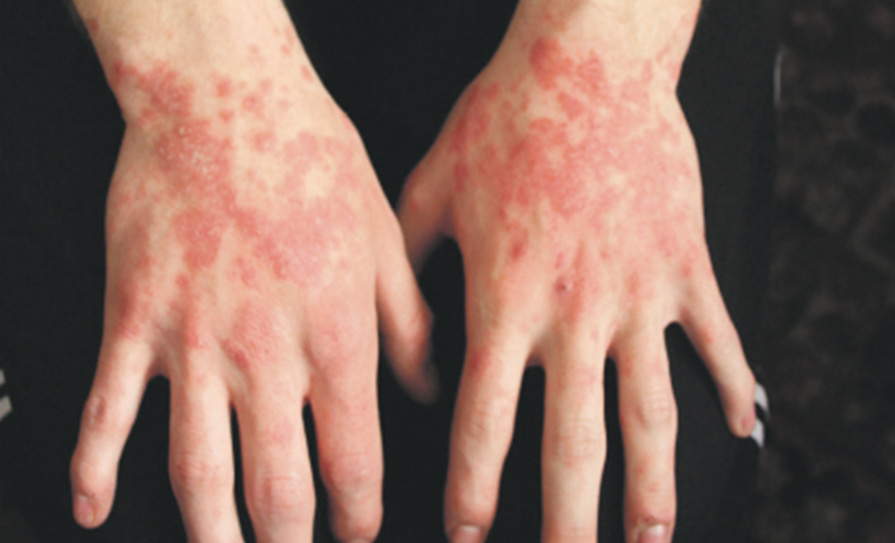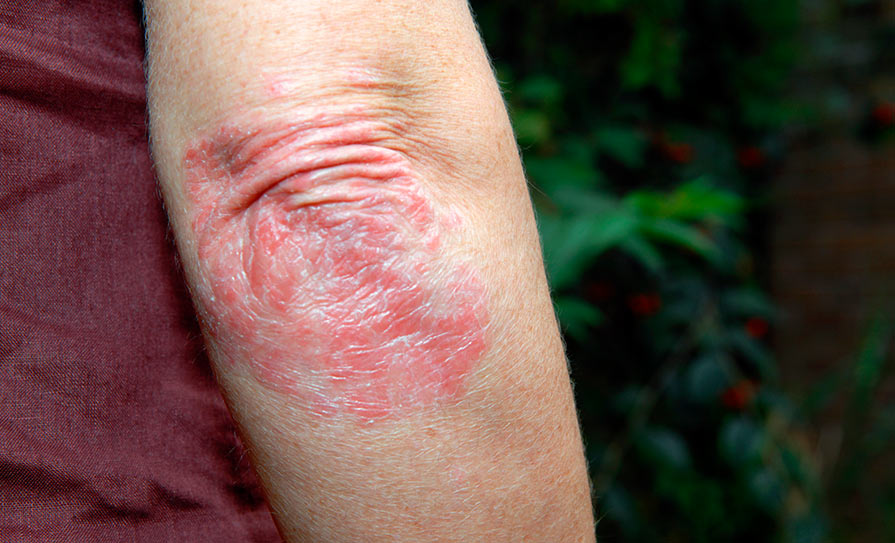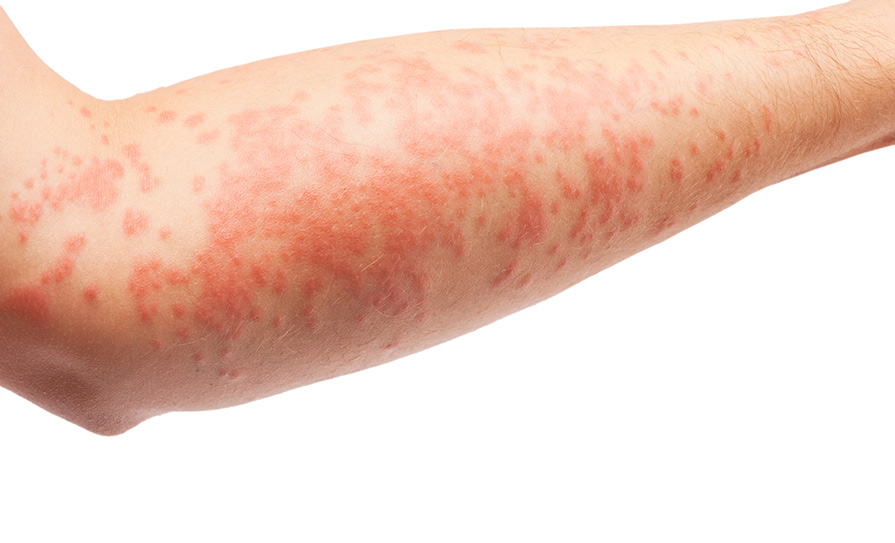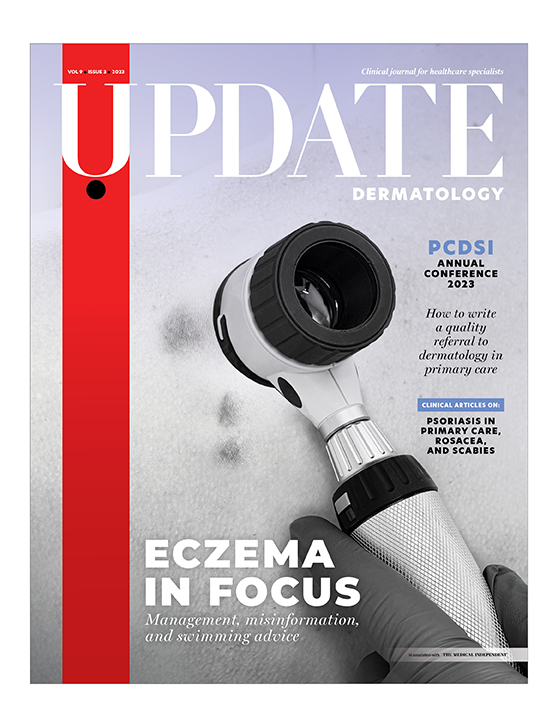Attendees at UCD’s Charles Institute Seminar Series recently heard a presentation from Professor of Cancer Biology
Prof William Gallagher, who discussed translational research in melanoma progression
The Charles Institute, Ireland’s national dermatology research and education centre, plays host to a range of guest speakers who cover a variety of topics ranging from skin cancer to psoriasis, among others. The series, which is sponsored by RELIFE (part of the A. Menarini group), is designed to provide expert advice from a range of distinguished national and international experts in their respective fields and is chaired by Prof Desmond Tobin, Full Professor of Dermatological Science at UCD School of Medicine and Director of the Charles Institute of Dermatology. The seminars are broadcast to attendees with a special interest in dermatology in other locations, who accessed the talks remotely via an audio-visual link.
Attendees heard a presentation from Prof William Gallagher, Full Professor of Cancer Biology and Director at the UCD Conway Institute and Deputy Director at Precision Oncology Ireland, who spoke on the topic ‘Malignant Cutaneous Melanoma: Progression-Related Biomarkers and Functional Mediators’. Prof Gallagher provided an outline of selected studies that have identified and validated melanoma progression-related biomarkers, as well as potential therapeutic targets.
Introducing Prof Gallagher, Prof Tobin pointed out that Prof Gallagher’s work places particular emphasis on translation of transcriptomic and proteomic datasets into clinically-relevant assays. Prof Gallagher explained that while much of his past work was focused on breast cancer, he subsequently developed a special interest in melanoma and he provided the seminar with an overview of some of the many research papers he and his team have published.
He spoke on the molecular determinants of melanoma progression and explained that there has been a revolution in the understanding of the molecular aspects of melanoma over the past 15 years, as well as treatment, particularly the context of targeted drug therapies and immunotherapy.
Biomarkers
Prof Gallagher provided an overview of the different stages of melanoma progression, from benign nevi, right through to local and distant metastases, and said he is interested in predicting the disease course based on an assessment of a primary tumour using prognostic or predictive biomarkers, as well as molecular approaches for dissection of function. Much of his work, he explained, is focused on the identification of biomarkers, such as genes or proteins that can be used to predict outcomes for patients with primary melanoma. “There is also interest in the area of predictive biomarkers, where we can predict a specific response to therapy, and a prototype example of this in the melanoma setting would be BRAF mutations,” said Prof Gallagher.
Data show that there is a low 25 per cent BRAF V600E mutation rate in Ireland, with a slightly slower mutation rate in primary lesions and slightly higher rate in metastatic lesions; however, this is in contrast to a 50-to-60 per cent BRAF mutation rate internationally, said Prof Gallagher. “The question is, why,” he told the seminar, “and we still don’t have the answer to this… the presence of a slightly elevated NRAS mutation rate, or other BRAF mutations [in Ireland], cannot alone explain the low frequency of this BRAF V600E mutation.”
Lung cancer and melanoma really have a high mutation burden compared to other tumour types
In the same research published five years ago, Prof Gallagher and colleagues also looked at a panel of more than 30 cancer-causing genes and 150 mutations in that context. “The idea is that if you identify at least one mutation in this panel of genes, that suggests a poor prognosis subtype of those melanomas,” he said.
Prof Gallagher spoke briefly about epigenetic alterations and specifically methylation events in DNA. “If you compare normal cells with tumour cells, there is a common phenomenon of clustering of methylation occurring predominantly, but not exclusively, at gene promoter regions,” he told the attendees. In patients, work from Prof Gallagher’s group has shown that methylation events can discriminate primary tumours from metastatic melanomas, and that epigenetic signatures can also be used to predict patient outcome.
“There is a big interest now in profiling tumours at a mutational level… we can see that some tumour types have a low mutational burden and some have a high burden; lung cancer and melanoma really have a high mutation burden compared to other tumour types. Some people have suggested that potentially, that may be the reason why immunotherapy has utility in that context because perhaps there are a lot of new antigens being formed.”
Other research has shown that down-regulation of a cryptic form of TBC1D16 via RNAi reduces the volume and weight of tumours in preclinical models, Prof Gallagher explained, “and interestingly, if you take those cells and inject them intrasplenically into animals, when you knock down that shorter form specifically in the metastatic cell line, you compromise the tumour’s metastatic capability”.
Altered methylation within the TBC1D16 gene was shown by Prof Gallagher’s collaborator, Prof Manel Esteller, to be the primary driver for dysregulated expression of the cryptic form in metastatic lesions. Loss of methylation within a cryptic promoter, allowing for a shorter form of TBC1D16 to be expressed, was associated with poor prognosis in patients.
Therapeutic targets
In relation to treatment of melanoma, Prof Gallagher said: “There are two interesting therapeutic implications. The first is in the context of BRAF and MEK inhibitor treatment. When tumour cells are hypermethylated for TBC1D16, they are inherently resistant to both BRAF and MEK inhibitor treatment,” he pointed out. “We think this is because there is a maintenance of pERK, even in the presence of an inhibitor… but there is potential for a combination of BRAF and EGFR inhibitors” to inhibit AKT/ERK survival signalling in resistant cells, he added.

The take-home message from that particular research, he said, was that “the loss of that kind of cryptic promoter methylation for the shorter form of TBC1D16 is a marker of poor prognosis on one side, but it also predicts a good response to BRAF/MEK inhibitor therapy. In tumours with this particular methylation event, [we] may also be able to predict response to EGFRi therapy.”
He suggested that there may still be a role for chemotherapy in melanoma, but only potentially when everything else has failed. “But we know for example that melanoma cells are often highly chemo-resistant, or they may initially respond and then develop resistance over time, and therefore they basically evade apoptotic cell death,” said Prof Gallagher. “We know that apoptosis is the primary mode of cell death, which is induced by DNA damaging agents such as dacarbazine, which has been traditionally used in the context of melanoma. The problem is, there are really no reliable markers to identify patients up-front who could potentially stand to benefit from treatment,” he said.
Prof Gallagher and colleagues collaborated with the University of Stuttgart to develop a model to measure the levels of nine proteins involved in the apoptotic cascade, some of which stimulate apoptosis, and some of which inhibit apoptosis. These are then profiled on tissue specimens and then expressions can be correlated with outcomes. “The summation of this work is kind of counter-intuitive,” explained Prof Gallagher. “Low expression of these pro-apoptotic proteins is suggestive of prolonged progression-free survival, and that was independently validated at the protein level, and using an independent cohort… we could see the same pattern at an individual level, where high expression is correlated with poorer outcome, and we could combine these together in a signature format.”
Prof Gallagher also highlighted other research to show that high expression of MSX2 is associated with good prognosis across all melanoma subtypes, but also specifically in superficial spreading melanoma and nodular melanoma. If MSX2 is over-expressed, this actually suppresses proliferation and increase apoptosis, said Prof Gallagher, “but also, interestingly, this can suppress melanoma cell invasion”.
New initiative
During the seminar’s Q&A session, Prof Tobin explained to attendees that he and Dr Shirley Potter, Consultant Plastic, Reconstructive and Aesthetic Surgeon in the Mater Hospital, Dublin, are endeavouring to launch a new initiative, a Melanoma Research Special Interest Group, starting at UCD but with plans to include melanoma researchers across the island of Ireland. Prof Tobin extended an invitation to specialists in all disciplines who may have an interest in melanoma to contact them if they would like to get involved.
Prof Tobin also commented on the apoptosis aspect of Prof Gallagher’s presentation and said: “For the normal melanocyte — if you believe that melanocytes are the true precursor of melanoma, and that there is not some kind of melanoma stem cell lurking in the background — we also find that there is a very intense apoptosis resistance in the melanocyte, at least in the epidermis,” he commented. “This cell seems to be intrinsically resistant to the typical apoptosis that could be happening all around it in the skin, particularly in the keratinocyte.”
In response, Prof Gallagher said: “As far as I am aware, chemotherapy response is pretty poor in the clinical context of melanoma; it was probably the ‘best-worst’ approach in terms of response to systemic therapy and in talking to some physicians, some of them don’t even consider it anymore in the context of the new era [of therapies]. I do wonder what happens after people fail on BRAF inhibitors and immunotherapy. Institut Gustav Roussy may provide access to the next emerging therapy but in economies where you don’t have access to immunotherapy, I wonder is there still a utility for chemotherapy as a lower-cost solution.”
He continued: “The intrinsic resistance of melanoma to apoptosis aspect is an interesting point. If you compare what appears to be the clinical response to treatment, compared to what they call the ‘dirty’ drugs, it seems to be poor in melanoma compared to other tumour types.”
RELIFE has had no input into the content of this article or series of seminars













Leave a Reply
You must be logged in to post a comment.